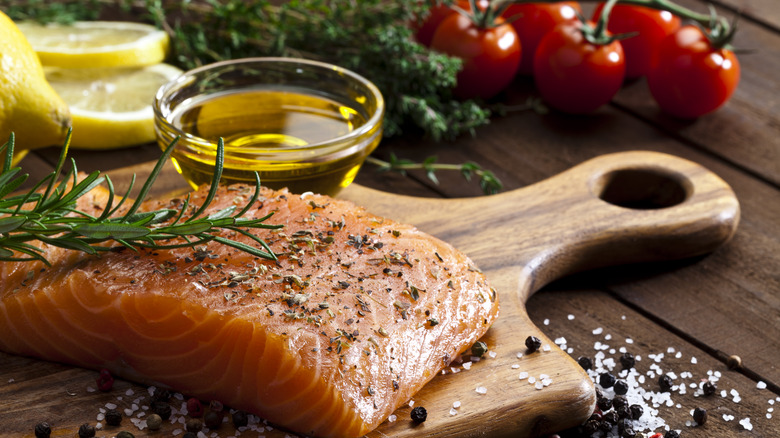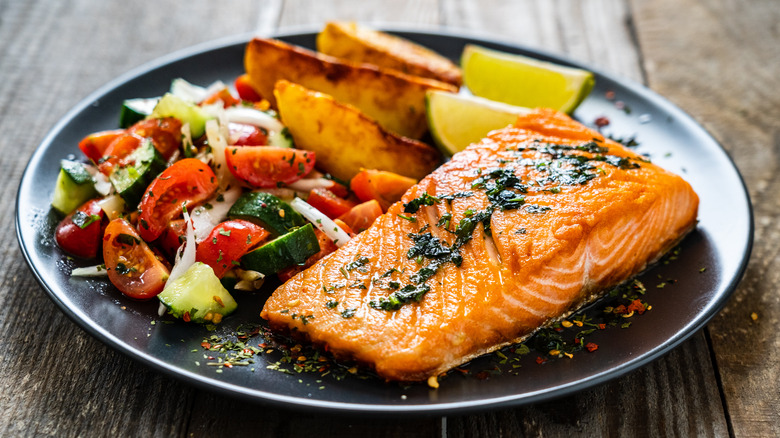If You Always Overcook Salmon, Try This Foolproof Method
Salmon is the most popular fish with U.S. consumers, and that's not likely to change anytime soon. The reason is simple: It's delicious. There are many ways to cook salmon, and its natural talent provides endless culinary options for exquisite dishes.
A perfectly cooked salmon fillet that tenderly flakes off the skin is truly a work of art. Many of us can attest that this isn't always so easy to produce. One night the fish comes out perfect, and the next night — despite repeating the same exact process — it somehow comes out overcooked. You're left poking the firm-chalked fish at a loss for what went wrong.
Cooking salmon the way most of us do can be finicky — only a few minutes more or less of cooking leads to different results. Fortunately, with only a little more patience, you can slow roast your salmon to avoid overcooking and ensure optimal tenderness. Many of us have overlooked this cooking method, but it might be the surest way to eat a juicy fillet.
Patience is a virtue
We all know that good things come with patience, and that applies to cooking salmon too. Fish becomes overcooked when its proteins shrink, releasing moisture from too much heat exposure. Slow roasting reduces the temperature and applies a gentler heat for a longer period, which allows the proteins to cook without altering the constitution. You will find that after slow roasting the salmon still looks translucent and fresh rather than firm and faded in color.
Many of us are used to throwing in a salmon fillet for the standard 20 minutes or so at a temperature ranging from 350 to 400 degrees F. To slow roast, try setting it to 250 degrees F and cook for 35 to 40 minutes. Once you get a feel for that, try reducing the temperature even more to 225 degrees F and cook the salmon for another 5-10 minutes. When your knife tip meets no resistance and the flesh is slightly opaque, your fish is ready to eat. For those who want to be more scientific about it, most chefs suggest cooking salmon until it reaches an internal temperature of 125 degrees. At this point, the fish is cooked but has not started to lose excessive moisture. Slow-roasting works well for fatty fish like salmon but is also worth trying out on halibut, steelhead trout, or sea bass.
You don't have to leave the quality of your salmon dinner to chance. Invest a little more time — you won't regret it!

